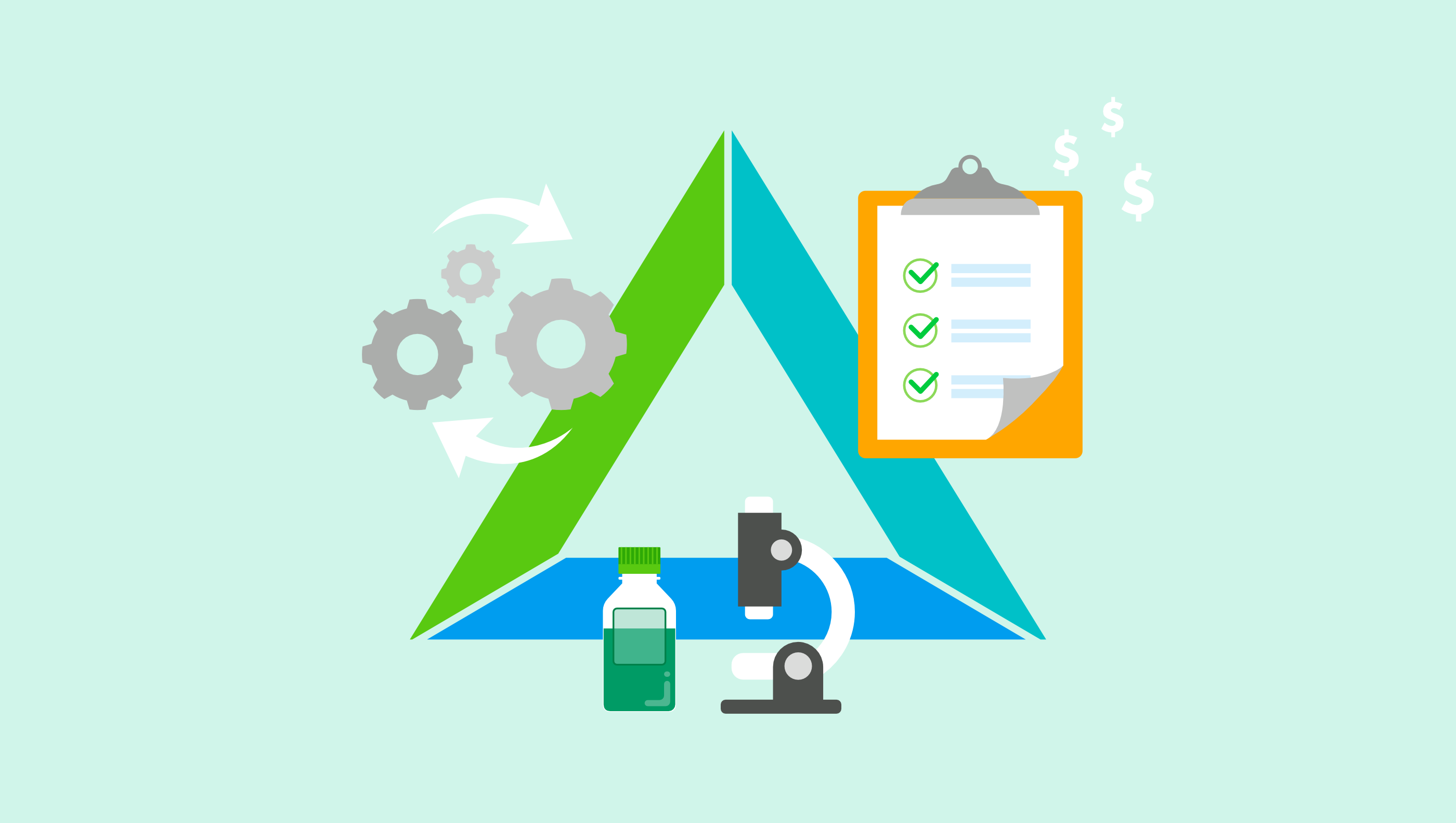With the rising costs of equipment, supplies, and operations, the biotech industry continues to face the pressure of managing budgets without compromising on the output. But working with limited budgets doesn’t always affect the functioning of the lab, especially if the finance team adopts what’s known as the ‘Lean Lab Management Process’. By operating efficiently, your lab can work smarter, not harder and strategically invest funding to scale lab growth.
Lean Laboratory Principles
Let’s start by learning what the term “lean laboratory” signifies. It’s a management approach derived from the principles of Lean Manufacturing—a process optimization driven approach focused on making the best use of available resources to deliver the highest quality results in terms of cost and/or speed. The aim of this approach is to improve the overall cost expenditure of the lab and keep a critical eye on all spending to avoid inefficiencies.
Benefits of a lean lab approach:
- Structured and controlled laboratory processes
- Consistent performance
- Increased productivity and efficiency
- Reduced costs
- Better inter-team collaboration
4 Ways Finance Teams Can Take a Lean Lab Approach
Although many laboratory finance managers have a background in technology and finance, managing a lean lab often requires additional knowledge and lab-specific know how. Optimizing lab finances requires communication skills to present budgets, people skills to identify their needs, and strategic thinking skills to make the right decisions without affecting lab performance.
Here are 4 ways finance teams can take a lean lab approach:
1. Identify costs + major spending
Identifying costs and managing budgets is the main principle of lean lab management. In order to manage costs well, it’s important to gain the full financial picture of all the expenditures in the lab and building budgets around them. These costs include hiring personnel, purchasing equipment and supplies, maintaining infrastructure and keeping up with technology.
With a thorough cost and spend analysis, the budgets you create are much more relevant, realistic, and effective.
Use this lab spend control checklist to evaluate where you stand and build out a plan to reduce costs.
2. Manage equipment & lab supplies
Labs budgets are heavily dedicated to lab equipment and lab supplies. It takes a trained eye to navigate discounts, bulk purchasing programs, and lab supply vendors and marketplaces to get the best prices possible.
While regular maintenance and updates are essential for lab equipment, work with experts to identify when to spend money on them and how much.
To save funding in the long run in your lab:
- Choose high quality equipment that, while more expensive, will last longer and reduce the need for servicing and save your lab members time. You’ll see lower maintenance costs and more advanced technology and your lab staff will thank you.
- Equip your lab with machines and products with multiple uses for maximum return on investment
- For shorter research programs, evaluate lead times for equipment— you may need to request machinery ahead of time or work closely with company reps to make equipment purchases or rentals possible.
Labs require a constant supply of plastic ware, safety gear, gases, chemicals, tools and other supplies for smooth functioning. However, to trim their costs, most labs build longer contracts with vendors with negotiated prices on bulk purchasing. This model is effective while trying to manage lab supply costs.
Learn more about keeping track of your lab expenses here.
3. Standardize lab operations
Standardized processes in a lab have an indirect impact on cost management. These processes contribute to employee satisfaction, increased productivity, and conscious use of lab supplies.
Processes that are easier to follow and efficient help improve your team’s expertise and allow them to better focus on their work. Eliminating chaos enhances the work culture and lowers employee turnover, reducing the costs of new hires which contributes to higher revenue.
4. Regularly hold budget review meetings
Schedule a regular budget meeting with team members who are involved with lab spending. This may include lab managers and researchers, human resources, grant writers, accounting/finance, or leadership. Some teams choose a biweekly, monthly, or quarterly cadence.
Use this opportunity to see where spending can be cut, products can be replaced, or budget can be stretched to put more money back into your research.
Each lab can run smoothly by adopting the basics of the lean management approach and customizing it based on their needs and requirements. Using a streamlined approach, you can yield more efficient results for a given project and exceed research milestones.





